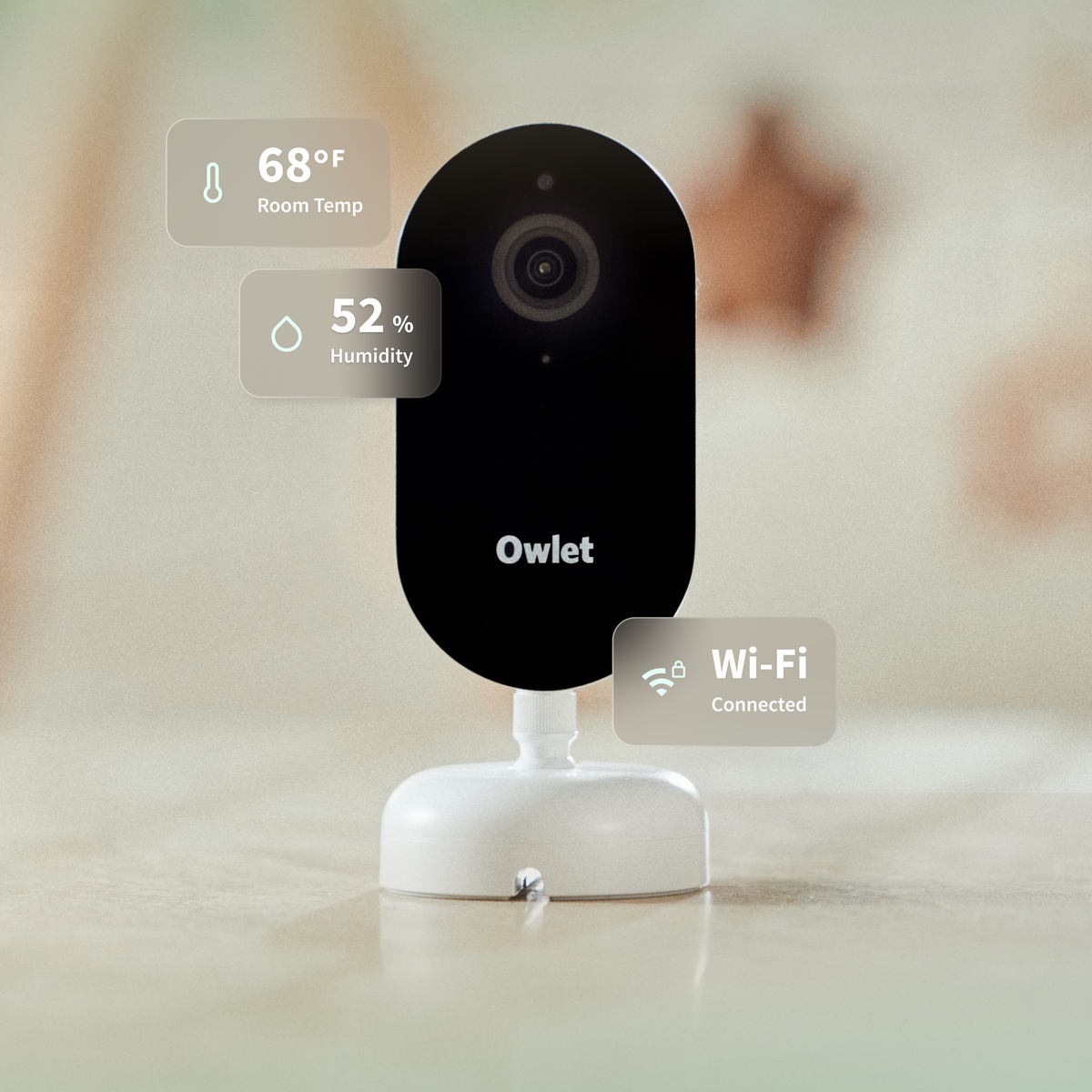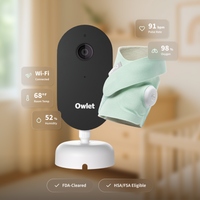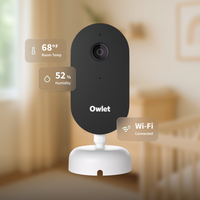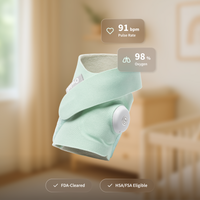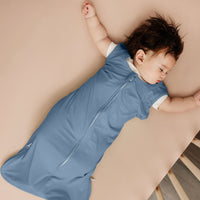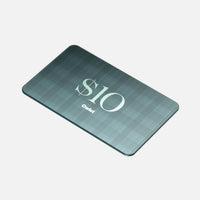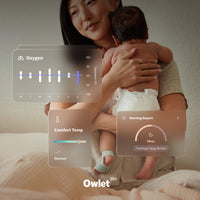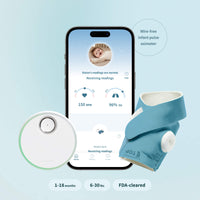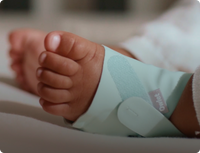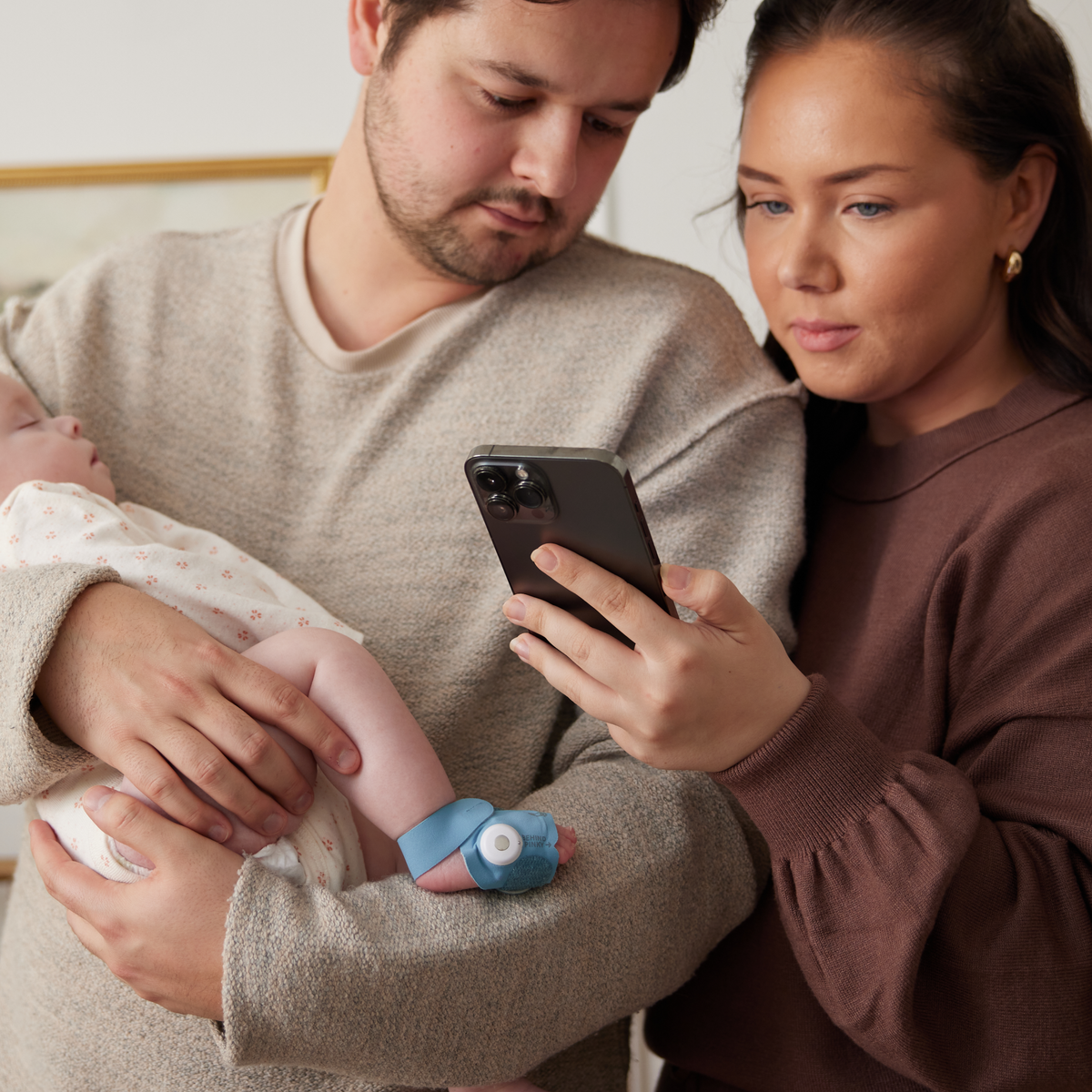References
BabySat™
BabySat monitoring system combines hospital-grade accuracy with Owlet’s modern and wire-free sock design. Monitor your baby’s pulse rate and oxygen saturation level from home and gain real-time insights into key vitals.
View a summary of studies on BabySat below.
Accuracy + Safety
- Owlet has conducted numerous rigorous clinical studies in diverse groups within the intended population at home and within the hospital to validate its product claims and ensure the safety and accuracy of BabySat. Given Owlet’s unique and large data-set of commercial users, Owlet has also performed substantial data-analysis on its own-real world data, which was presented to FDA. The design of these studies was done in consultation with the FDA, and their results closely evaluated by their reviewers.
- Accuracy generally means how close the measurements obtained from our device matched equivalently to a gold standard measurement, or to comparable medical devices used in the home and hospital. For pulse oximeters, measurements of accuracy are validated statistically to determine if they meet International Standards (ISO), including under motion of the infant. Typically this means that Owlet devices had to measure within 3% of SpO2 measurements obtained from the gold standard of oxygen saturations from blood gas analysis.
- Accuracy of BabySat was studied in 35 infants in the home setting against an FDA-cleared reference pulse oximeter, with lighter and darker skin tone study subjects included in the group. The SpO2 (oxygen saturation) and pulse rate average root mean square (ARMS) values, a measure of agreement, were 2.16% and 3.53, respectively. There were no differences seen in accuracy dependent on age, sex, or Fitzpatrick score. During infant behaviors (i.e., wiggling, feeding) associated with the highest motion levels, the mean SpO2 (ARMS)value was 2.39% ; the pulse rate mean ARMS during highest motion conditions was 5.02.
- Accuracy of BabySat was tested in 18 adult subjects in a hypoxia lab setting. BabySat readings were collected and compared to arterial blood gas measurements of oxygen across a range between 70-100%. A motion simulation protocol was also applied to determine accuracy during motion conditions. Mean SpO2 ARMS collected by BabySat vs. blood gas measurements were 2.47% during nonmotion conditions, and 2.97% during motion conditions. Both of these measurements meet ISO standards, which set the international metrics for pulse oximeter accuracy.
- BabySat has been shown to be safe for continuous wear in infants when the device is used according to its labeling. Its adhesive free design minimizes the risk of skin irritation.
Dream Sock®
The first-of-its-kind FDA-cleared Dream Sock® smart baby monitor provides caregivers with a deeper understanding of their infant’s safety and well-being through real-time health readings and timely notifications when their baby needs their attention.
View a summary of studies on Dream Sock below.
De Novo FDA clearance
- Dream Sock® is the first-of-its-kind FDA-cleared smart baby monitor to offer Live Health Readings and Health Notifications for use with healthy infants between 1-18 months, 6-30 lbs. Dream Sock is a breakthrough product for the industry, having been awarded a De Novo clearance as a direct to consumer home monitor for infants.
- Dream Sock achieved DeNovo clearance from the FDA. This classification of clearance denotes not only that Dream Sock is first of its kind to receive clearance, but also that the FDA review team and independent clinical reviewers determined that the device safe and accurate, and most importantly that the benefits of using the device outweigh the risks.
- Owlet collected data from 9 formal clinical evaluations to support our application for De Novo FDA clearance for Dream Sock. Data was collected from over 300,000 infants to provide information on the performance of Dream Sock.
Accuracy
- “Accuracy” generally means how closely the measurements obtained from Dream Sock matched equivalently to a gold standard measurement, or to comparable medical devices. For pulse oximeters, measurements of accuracy are validated statistically to determine if they meet International Standards (ISO), including under motion of the infant. Typically this means that Dream Sock had to measure within 3% of SpO2 measurements obtained from the gold standard of oxygen saturations from blood gas analysis.
- Accuracy of Dream Sock was tested in 18 adult subjects in a hypoxia lab setting. Readings were collected and compared to arterial blood gas measurements of oxygen across a range between 70-100%. A motion simulation protocol was also applied to determine accuracy during motion conditions. Mean ARMS of Dream Sock vs. blood gas measurements were 2.47% during nonmotion conditions, and 2.97% during motion conditions. Both of these measurements meet ISO standards, which set the international metrics for pulse oximeter accuracy.
- Owlet has been acutely aware of bias in the degree of accuracy for pulse oximeters in darker skin tones. A concerted effort was made to include infants with all skin tones in our clinical studies. In every analysis we performed, darker skin tone did not affect the accuracy of Owlet readings.
- The Owlet Dream Sock is designed to minimize the number of false positive notifications, which could lead to parents’ unnecessary anxiety or healthcare visits. Our unique product design features that reduce unnecessary notifications were formally evaluated by the FDA for their performance in a clinical setting.
- In an FDA-reviewed study of 35 infants conducted in the home setting, Owlet devices had a high positive predictive value for alerting for low oxygen levels (meaning we have a low probability of generating an alert when the condition is not present), indicating a low rate of false positive alerts.
Owlet
- Owlet has monitored more than 1.3M babies. The claim of monitoring 1.3M million babies is based on aggregated data since Owlet’s launch. Individual data points are anonymized and strictly adhere to privacy policies to ensure the confidentiality of user information.
- A survey of 5,125 parents/caregivers was conducted that revealed that 94% of parents experienced better sleep and 96% felt reduced anxiety with use of the Owlet sock (OSS) product. (2017)
